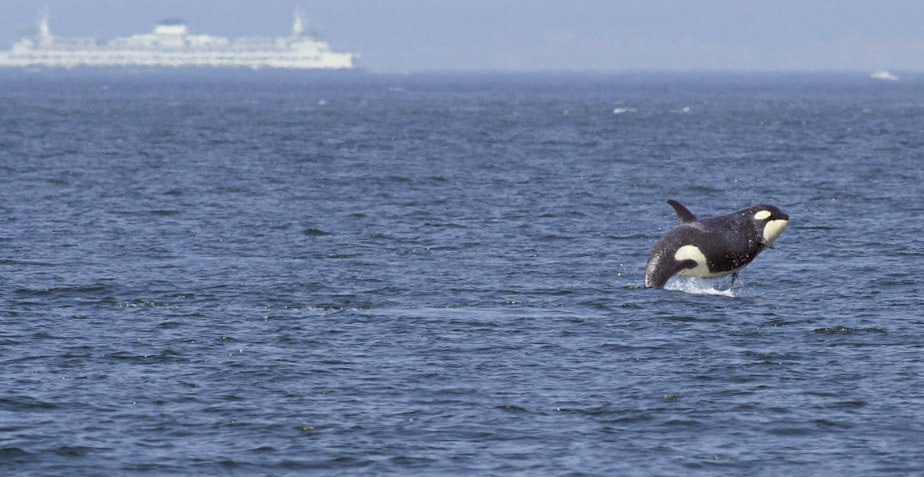Puget Sound’s Dark Role In Orca Captures

SeaWorld says it will end its killer whale breeding program and will stop making the mammals perform tricks for stadium crowds. It’s a historic about-face from the days when SeaWorld hired people to capture wild killer whales in Puget Sound.
Tacoma native Ted Griffin wrangled orcas for aquariums in the mid-to-late 1960s.
“We were flying in helicopters and float planes, we got sea boats running up and down Puget Sound at 70 miles per hour,” Griffin said in an interview with KUOW in 2002.
More from KUOW: Why Zookeepers Don’t Want To Touch Seattle’s Newborn Gorilla
But attitudes about orca captures changed in 1970, when Griffin and business partner Don Goldsberry herded a pod of orcas into Penn Cove off Whidbey Island. Five whales, including four calves, drowned in the operation.
Sponsored
“The public became enraged beyond anything you can imagine,” Griffin said, adding that he knew at that moment his days as an orca hunter were numbered.
The last legal capture of orcas in the U.S. was in Budd Inlet near Olympia in 1976.
Ralph Munro, who at the time was an aid to Washington Governor Dan Evans, witnessed the capture from a sail boat.
“It was frantic,” Murno said, describing the scene of an orca pod in and around a net pen. “The whales were thrashing, they were spy hopping, they were trying see who was inside and outside the net.”
Munro says the story was on the front page of the Seattle Post-Intelligencer the next morning. The state sued SeaWorld in federal court. The whales were eventually released. And Puget Sound became the unofficial sanctuary for orca whales.
Sponsored
More from KUOW: Where Do Seattle-Area Crows Go At Night?
